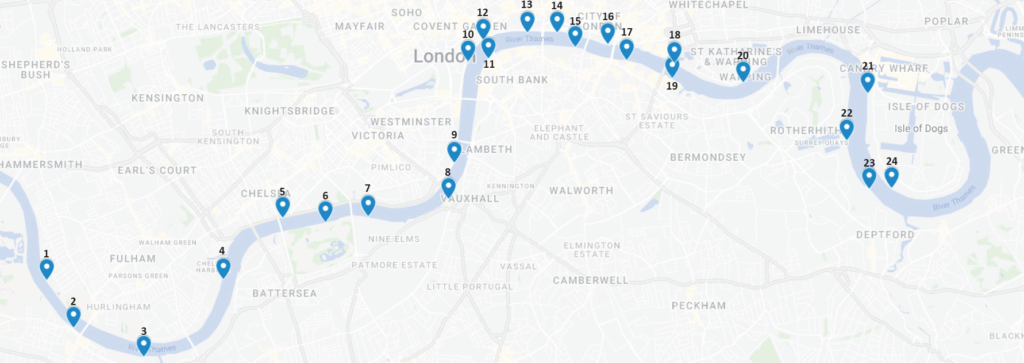River freight can help reduce road traffic and air pollution and be more reliable and provide an easy way to access Central London. CRP’s new Clean Air Logistics for London project, which started in July 2021, focused on river freight and further made the underused Thames a viable route for goods coming into London.
Light Freight is not a new concept on the river Thames
From a historical standpoint, the Thames was used to transport goods as early as the 16th century as the city’s population flourished alongside the increased requirement for shipbuilding to support the expanding naval power and world trade requirements. The Thames transported timber, wool, foodstuffs, and livestock regularly to maintain the city’s people and economy. More recently, the Thames is less well used for Light Freight operations. However, at least two operations have been set up in the last few years. So there is already a precedent for a successful Light Freight service on the river, albeit at a relatively modest scale. However, previous studies carried out by Bearing Point and WSP have identified the potential for significant growth in this sector.
Additionally, Class V passenger boats have, for many years, been provisioned via passenger piers (although dedicated service piers are also used). Freight handling methods include sack trucks and roll cages to load food, drinks, and other supplies onto vessels. While this is being done regularly, it is not without risks; maneuvering a heavily loaded roll cage, without brakes, down a brow at low tide can be particularly challenging. In addition, waste and recyclates are collected from several piers and static ships by specialised vessels such as the Tidy Thames.
Recently a DHL light parcel service was established, bringing packages from London Heathrow to central and east London via a pier in the west.
A service carrying light medical supplies was also inaugurated in 2021. This service brings essential non-perishable equipment for operating theatres into London for use by Guys and St Thomas’ NHS Trust.
Design of piers along the river
A study by London’s Cross River Partnership considers the design of the existing piers along the river Thames and how they could be modified to accommodate the requirements of a Light Freight service. To better understand these requirements, the study revisits and expands on the works carried out previously by WSP and Bearing Point.

The study confirms the intended focus of the Light Freight service to be smaller, more maneuverable cargo, which can be moved using a Roll On – Roll Off methodology or via manhandling, depending on the location of the pier. The study considers two models for a successful Light Freight service, which would be actualized based on the magnitude of the Light Freight service.
In April 2022, CRP will release their new guide ‘Setting up a River Freight Project for Businesses’, which will guide businesses who are interested in using the River Thames to begin a pilot. The guide includes a case study with DHL, who has been delivering on the river since 2018, and information, terminology, and relevant groups and contacts that will help businesses implement a river freight trial.
Source: Cross River Partnership
